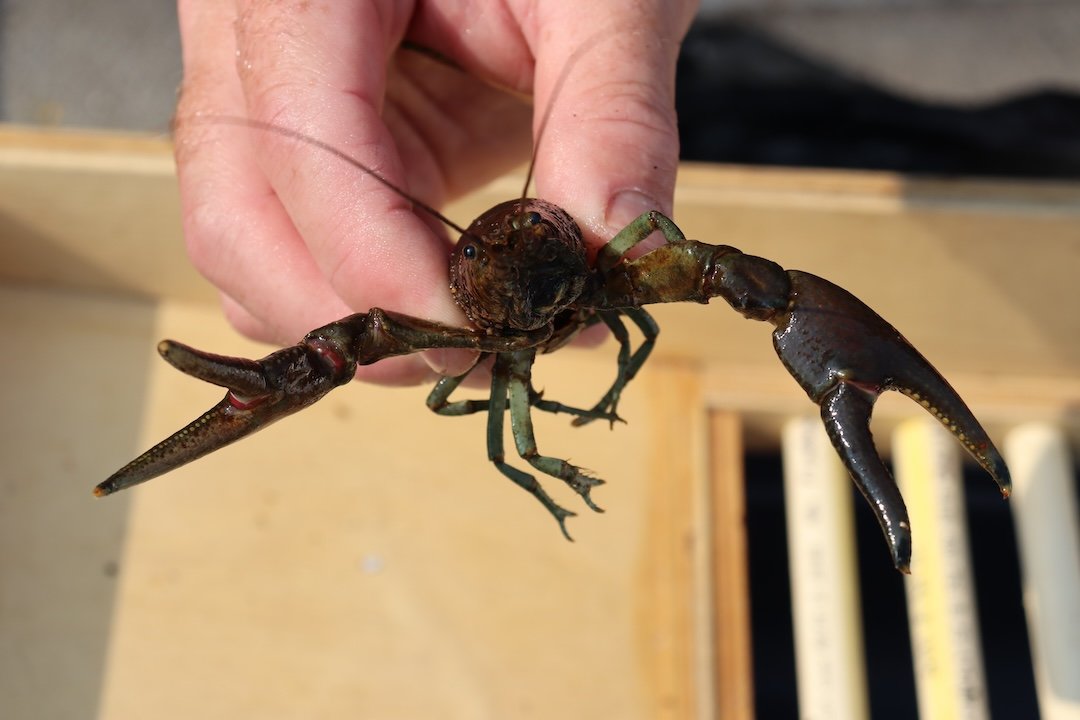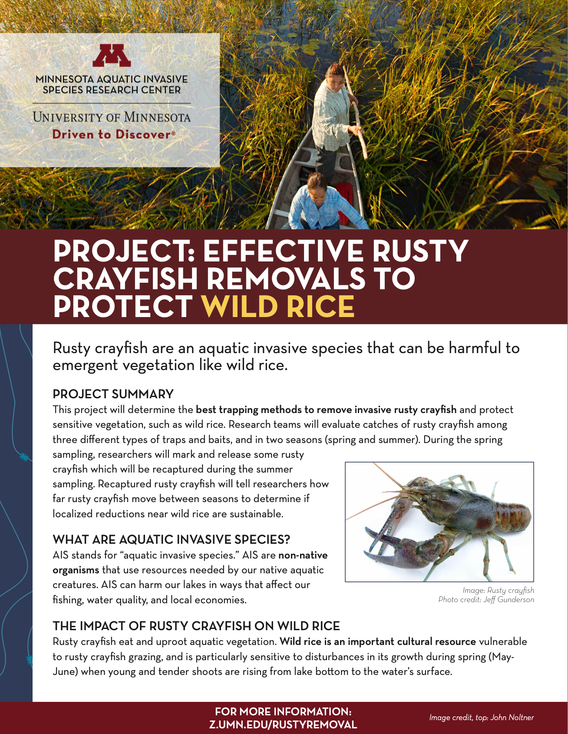
This project will determine which trapping methods are most effective for protecting wild rice from rusty crayfish grazing and will evaluate long-term sustainability of localized removals through recapture of marked crayfish.
Background:
Rusty crayfish eat and uproot aquatic vegetation. Wild rice is an important cultural resource vulnerable to rusty crayfish grazing, and is particularly sensitive to disturbances in its growth during spring (May- June) when young and tender shoots are rising from lake bottom to the water’s surface.
Activities:
MAISRC researchers will evaluate catches of rusty crayfish among three different types of traps and baits, and in two seasons (spring and summer). During the spring sampling, researchers will mark and release some rusty crayfish which will be recaptured during the summer sampling. Recaptured rusty crayfish will tell researchers how far rusty crayfish move between seasons to determine if localized reductions near wild rice are sustainable.
This research project examined three lakes in 2023 and will examine three different lakes in 2024. The findings will provide stakeholders (lake associations, community groups, soil and water conservation districts, and Native American bands) with guidance on effective rusty crayfish control using trap and bait choices legal in Minnesota. The findings on rusty crayfish movement rates will inform stakeholders how long trapping efforts near sensitive vegetation may be protective.

